Back in 2015, Stephen and I (Rebecca) decided to add shoes to our Amazon FBA inventory. Since our initial experiment with shoes, we have learned so much about how to source and sell shoes on Amazon. In fact, over the past 6 years, shoe are our second most item on Amazon (the first being toys). Since we’re finding such great success with shoes, we thought we’d share with you our experiences since we started venturing into selling shoes through Amazon FBA.
If you’re not familiar with our story as a couple and as business partners, Stephen is the one in our marriage with the business experience, and I am the one who came into this whole FBA thing with a bit of skepticism. Now that we’ve been working on the business together for several years, I’ve found areas where I gravitate more than Stephen (check out our post about my experience getting into online arbitrage, for example). It’s been a work-in-progress to get to the point we’re at with our current roles in the business, and I’m sure it will continue to evolve – but for now we’ve found a system of sourcing that we love and is profitable for us.
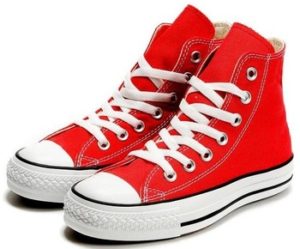 One key component of our current sourcing strategy for Amazon FBA is selling shoes. We first added shoes in the fall of 2015, and ever since then we’ve been pleased with the difference this category has made in our business and are continually looking for ways to expand our shoe inventory.
One key component of our current sourcing strategy for Amazon FBA is selling shoes. We first added shoes in the fall of 2015, and ever since then we’ve been pleased with the difference this category has made in our business and are continually looking for ways to expand our shoe inventory.
Here are the main reasons we decided to add shoes to our FBA sourcing strategy:
-
 Shoes gave us an opportunity to diversify our inventory.
Shoes gave us an opportunity to diversify our inventory.
Before fall of 2015, our main categories were toys, toys, toys, books, toys, home and kitchen, toys, and a smattering of sports, grocery, and health and beauty. We wanted to find a category where we could consistently source products and diversify our inventory away from being so toy heavy. Don’t get me wrong – we love selling toys and are always super excited when Q4 rolls around. But we wanted to branch out and try something new, and shoes were very appealing for us as a new category for diversification for reasons I’ll get into below.
-
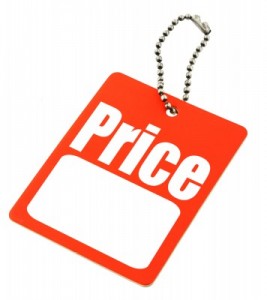 Shoes have a high average selling price.
Shoes have a high average selling price.
A relatively high average selling price (ASP) can be a step towards both saving time and increasing profits. Don’t we all want to make more money and spend less time doing it?
Think about it this way: You can sell one widget for $100 or ten widgets for $10 apiece, and you make the same amount in sales, $100. What about the prep and handling time, though? Those ten widgets require ten times the prep work, ten times the labels, ten times the handling to put into a shipping box. The FBA pick-and-pack fees will apply ten times to the $100 of sales. The one $100 widget, however, requires 1/10th of the prep work and only one pick-and-pack fee.
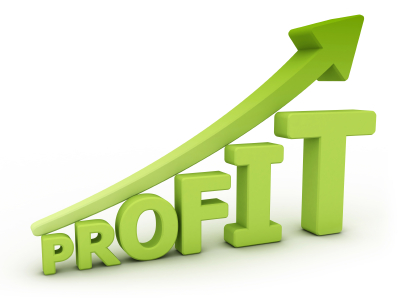 Shoes are a great way to increase the ASP of your FBA inventory. In 2013 and 2014 we sold a lot of $10 or $15 toys. A lot. For the past four years, we’ve sold a much lower number of inventory items per year, but our ASP has gone up considerably because of the number of shoes we’ve sold.
Shoes are a great way to increase the ASP of your FBA inventory. In 2013 and 2014 we sold a lot of $10 or $15 toys. A lot. For the past four years, we’ve sold a much lower number of inventory items per year, but our ASP has gone up considerably because of the number of shoes we’ve sold.
In 2016-2018, our ASP in the shoe category went up to $68, while our overall ASP across all categories went up to $45. As you can see, shoes have had a tremendous impact on our overall ASP.
-
 Shoes have fewer competitors for sales.
Shoes have fewer competitors for sales.
Many shoe brands are restricted for newer Amazon sellers, which significantly lowers the number of competitors on any given item. While many low ranking books or toys might typically have 100+ sellers, it’s relatively easy to find low ranking shoes on a regular basis with only a handful of sellers – or even one or none on certain variations.
When we first started selling shoes in 2015, shoes were a gated category. Now that shoes are an ungated category, the number of sellers in the category has increased somewhat, but not enough for us to be unable to find listings with little or no competition, especially in brands that are restricted to newer sellers. And even though some shoe sellers bemoan the opening up of the category as the end of big profits in shoes, we’ve found that the recent round of brand and ASIN restrictions have further kept the competition at a minimum, and we believe it will continue to do so into the future. (You can watch our YouTube video for more on our optimistic view of brand restrictions.)
-
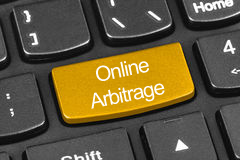 Shoes provide an opportunity for me to source solely (that pun is for you, Stephen!) via online arbitrage.
Shoes provide an opportunity for me to source solely (that pun is for you, Stephen!) via online arbitrage.
I know a lot of people make big profits on shoes doing retail arbitrage, but not me. I tried it and hated it. Hated. It. I mean it, seriously, I did not find even one pair of shoes to resell doing RA. Instead, I signed up for a deal list (Gated List), and Tactical Arbitrage (use code FULLTIME10 for an extended 10-day trial of Tactical Arbitrage), and I’ve stuck with those for the past few years.
With the help of these tools, I was able to switch from doing part RA/part OA across several categories to doing only OA, almost entirely in shoes. Before I started buying shoes, I couldn’t find enough inventory to buy online in other categories to spend my entire weekly sourcing budget. I would have to also go out and do RA to find enough inventory that fit my sourcing parameters.
![]()
Shoes changed everything for me as far as focusing on OA alone. My mileage records from 2015 onward prove it: I stopped recording mileage for RA sourcing at exactly the same time I committed to sourcing shoes online. Switching to only OA for shoe sourcing has allowed me to stay home more, put fewer miles on my car, and focus on other professional pursuits. Buying shoes through OA truly has allowed our business to make more money and spend less time doing it.
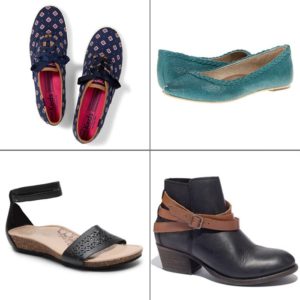 I do have to say, though, I wasn’t so sure at first that we would make shoes a permanent addition to our FBA inventory. When we started in the shoe category, we decided to undertake a two-week experiment of spending the majority of our sourcing budget and time on shoes and then just see what kind of sales we could get before deciding whether or not to continue buying shoes. I’ll talk more in detail in the next post about why making a decision based on this kind of experiment isn’t the best idea when it comes to learning the shoe category, but for now I’ll just say we were less than enthused about the results. We asked a bunch of questions from people who know the ins and outs of the category, and after some soul searching (or sole searching – another pun! OK, I’ll stop) we decided to keep at it.
I do have to say, though, I wasn’t so sure at first that we would make shoes a permanent addition to our FBA inventory. When we started in the shoe category, we decided to undertake a two-week experiment of spending the majority of our sourcing budget and time on shoes and then just see what kind of sales we could get before deciding whether or not to continue buying shoes. I’ll talk more in detail in the next post about why making a decision based on this kind of experiment isn’t the best idea when it comes to learning the shoe category, but for now I’ll just say we were less than enthused about the results. We asked a bunch of questions from people who know the ins and outs of the category, and after some soul searching (or sole searching – another pun! OK, I’ll stop) we decided to keep at it.
I’m so glad we did! I was afraid all the hype about shoes was just that…hype. But for us, shoes have lived up to their incredible reputation as an Amazon FBA profit powerhouse.
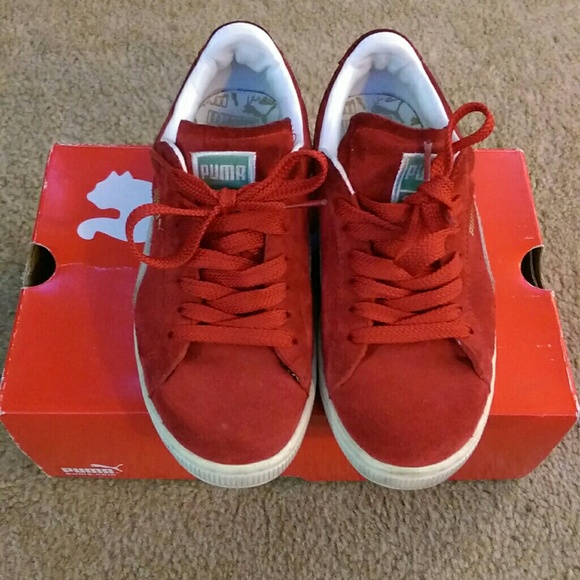 Shoes aren’t for everyone, and we’ll spend some time over the next couple of posts discussing the ways we’ve run into issues and learned to overcome those obstacles. Our hope is that this post and others to come will give you a way to make an informed decision about whether or not to try out the shoe category.
Shoes aren’t for everyone, and we’ll spend some time over the next couple of posts discussing the ways we’ve run into issues and learned to overcome those obstacles. Our hope is that this post and others to come will give you a way to make an informed decision about whether or not to try out the shoe category.
Do you sell shoes on Amazon? Do you have any reasons to add to our list above? Let us hear from you in the comments! We would also love to hear your questions about selling shoes as we continue to focus on shoe tips and tricks over the next couple of weeks.
*This post was updated for 2022
![]()
The #1 way we source shoes to sell on Amazon is via online arbitrage.
If you want to add or improve your existing online arbitrage (OA) sourcing skills, then check out our course: The Reseller’s Guide to Online Arbitrage: Grow Your Amazon FBA Business With Online Sourcing Profits.
The course is a combination video course (5+ hours of OA training) and a 100+ page ebook. The videos and book both share the exact same content (so you can pick the format you most like to learn from). The course also comes with six time-saving and money-making bonuses all at no additional charge!
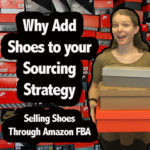
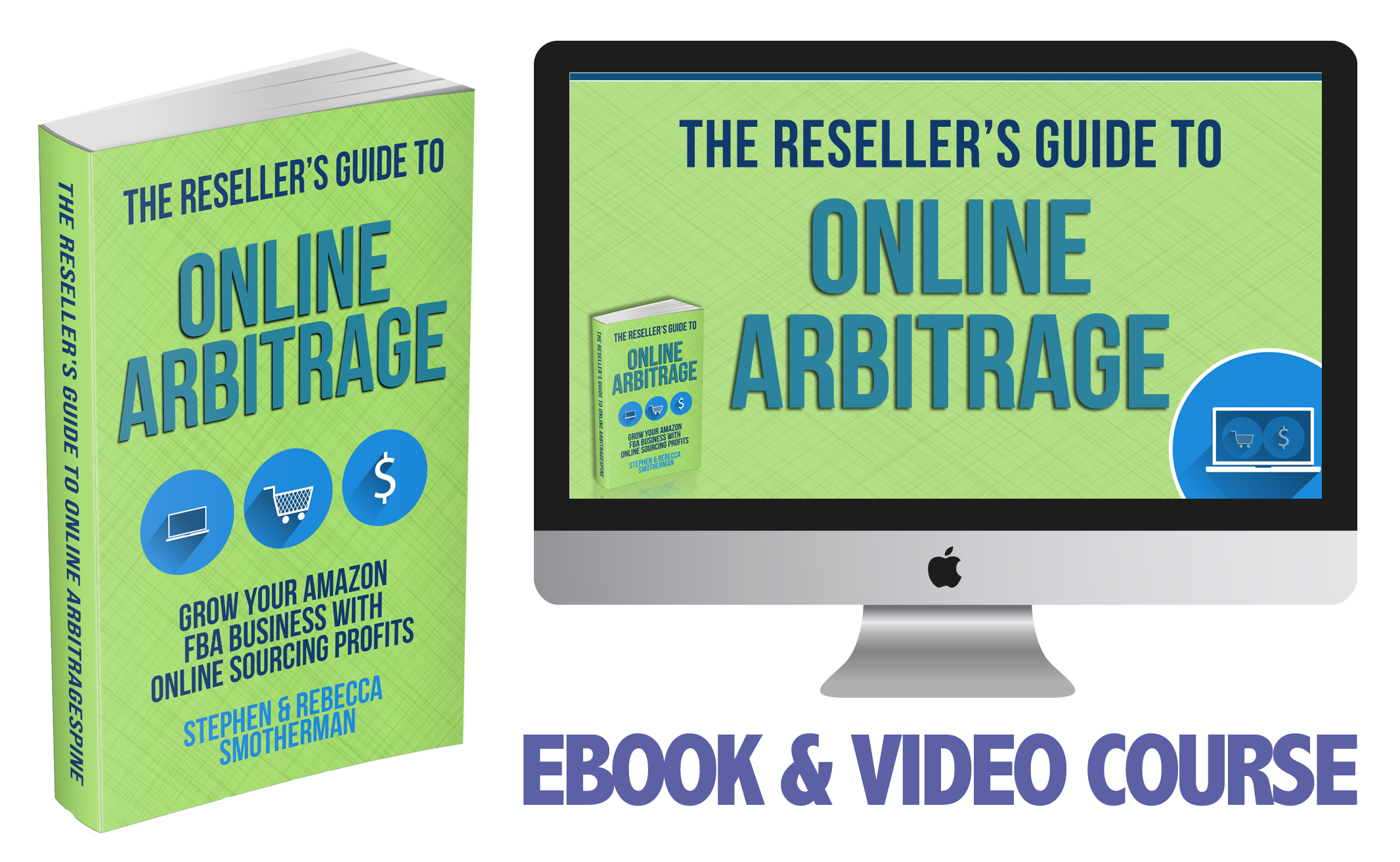
Thanks you two. I love that you are willing to share your experience in getting started in another category it really sheds the light on any stops we may run into along the learning curve 🙂 As a note does anyone have experience in specializing in a particular type of shoe or shoes?
Thanks for info! Do you feel its been necessary to have one of the listing services to start out correctly?(other than OAXray) Ken U
That’s the route I took. I started out with Your Sourced Inventory, and after a few weeks I added Gated List. I then tried different levels of Gated List (receiving the list a different number of days a week) until I found the number of lists per week that I prefer. Whether that’s necessary for everyone, I can’t say for sure, but I know for me it saved a ton of time.
Great to hear from Rebecca! I love to hear how this business really works for you! I’m building up shoes with OA currently. I’m curious about how much your weekly budgeted spend is? I’m trying to build plans/budgets for what’s possible with a 1 woman show with potential for adding prep/shipping help. Thanks!
Our weekly budget varies from disbursement to disbursement. We budget for sourcing by first taking our personal income out of the Amazon disbursement (gotta pay the bills!), then we look at what’s left and take out business expenses and use the rest for sourcing. How we split up that sourcing budget depends on what RA sales Stephen has coming up over the next two weeks and what wholesale purchases he needs to make. I’ll be talking more in the next post about the kind of capital it takes to build up a shoe inventory.
Thanks so much Rebecca! I’m looking forward to the next postings!
This article has pushed me to start sourcing shoes OA. I’ve been leary for a number of reasons but seeing someone else do it really inspires confidence to try. I do a lot of OA and this will just add to my daily routine.
Thanks!
Thanks for this great article, Rebecca! You both are my “go to” in this business. I have most of your books and get so much out of Stephen’s Periscopes and your blog’s. I don’t have time to read and listen to all of the info that is circling around, since I have a “normal” job on top of FBA. Your information is relevent, timely, concise, applicable, and easy to understand. With your help, I’ve just had my best month ever! Thank you, thank you!!
That’s so exciting, Sue! Congrats on your best month ever! May it continue to go upward from here! We’re honored that we can be part of your journey.
Thanks for this Rebecca, I would love to see you address sales ranks in shoes. Since we can’t see sales history due to variations, I feel like we are just taking a shot in the dark when buying shoes, hoping that the sales rank is accurate and not just the result of a recent sale after months of no sales. Thanks!
That’s a great question, Sarah, and one that sometimes drives me bonkers. I’ll definitely be talking about it in the next post. My short answer for how I handle it is that I only buy shoes with a small number of variations and I usually stick to basic colors, not crazy wild prints or bizarro colors that are likely to get fewer sales than black, white, brown, navy, etc. More details to come in the next post!
Newbie here. Sorry to have to ask but what is a “variation” in shoes? How does that work?
Shoes come in “child variations” of color/size. For example, the “parent” would be a New Balance running shoe of some particular style. The child variations would be black size 8, black size 8.5, black size 9, white size 8, white size 8.5, and so on.
Also…it’s not the question that drives me bonkers; it’s the fact that we can’t see sales history because of variations 😉
This post is from quite a whole back, but I have a question I hope you’ll see and address. When selling shoes, do you have to have a variety of sizes to win the buy box or can you be opportunistic and only buy out certain sizes, colors, etc? I have the same question about a headboard for a bed. Would we need to offer the headboard and Twin, Queen & King…or could we only offer it in King, and win the buy box with FBA? Thanks!
Absolutely you can be opportunistic 😉 The buy box is assigned per variation, so you can have one color/size variation in stock and still get the buy box for that particular variation. I do this all the time and get the buy box for that one variation. No need to have multiple variations in stock in order to get the buy box.
Rebecca, I’m looking around and trying to educate myself a little on selling product on line/ AMAZON or Facebook.
I am ignorant about it all. I have a descent knowledge and success it my long gone history in sales.
I think I’m understanding that you , personally BUY INVENTORIES.. . and resell .
I am disabled w a limited income and considering encouraging my grown children to consider these opportunities. I do however need an education on all of this without all the abbreviations plz.
You are a straight forward person. So, I ask ,what monies and structuring do you recommend?
I can’t wait for the other posts in this series. Please post them soon. I’ve been thinking about shoes for awhile now. Thanks
I am looking forward to your future posts. I did a lot of shoes a few years back and gave up because of the high return rate. How do you deal with the high return rate when the shoe doesn’t fit? (Another pun!)
Most of our returns have been able to be sold again. Stay tuned for more info about returns in a future post.
Love Love Love Shoes & more shoes and then after that I’ll take some more shoes. 😉
Selling shoes would be interesting, but shoes would have different sizes, would that affect FBA fees?
Yes, but the differences are VERY small in most cases. Monthly storage fees and long term storage fees are based on cubic feet, so a size 6 shoe is going to have smaller fees than a size 14 shoe because of the size. But overall, the difference is not much at all.
I too hadn’t tried selling shoes was just staying with the categories I was comfortable with like yourself the toys and kitchen items as well as baby things. Shoes have made improvements for us too. It is better to only have to deal with one item versus a 100 to get the same ASP.
I’ve been lucky so far with finding shoes doing RA but would so love OA. I’m thinking about looking at YSP and the Gated List. Thanks for sharing that with us.
If I want to sell boots that already are being sold on Amazon and already has a listing, do I still have to submit any photos?
No need to submit any new pictures unless it’s a different variation (color/pattern).
Thank you for sharing your experiences with selling shoes! I was recently approved to sell shoes and have not been able to find much info to help me get started. Looking forwatd to the next post!!
How do you use your sourcing lists? Do you buy the shoes off the list or do you use it as a starting point to find what you will buy?
Great question… we discuss that right here: https://www.fulltimefba.com/get-the-most-from-your-online-arbitrage-subscriptions/
We know people that have doing this for quite a long time. They started on ebay, but switched to Amazon FBA. They do very well. It is now their full time job and supports them nicely. They get great deals on outlet shoes, and most of the outlets in the area know them well. They are very good at purchasing at very low prices . They keep their costs low by employing their teenage kids and their friends to travel to the outlets to pick up the merchandise. So, it is a real family business. They are large enough now that they have additional employees. The switched to FBA (from ebay) and relieved themselves from doing all of the individual packing,shipping, etc.
An issue that would prevent me for doing something similar (besides the fact that I know them and do not want to cut in to their business. There is only so many outlets in our area) is that the shoes from outlets are not the same and most people do not know that. And, for the people who do know that, how do they know you may be selling “outlet quality” shoes unless you say so in the Amazon listing. And in some cases, the difference is quite substantial. I know people who run/jog all of the time and have been using a particular athletic shoe only to find out that the pair they purchased at the outlet runs smaller, and/or falls apart faster. The “outlet business” is a completely different business model and some consumers know this, but some do not.
I have often wondered if the shoes sold on sites such as 6PM or similar sites are sourced as overstock from outlets or ? How do you know if any of the shoes you purchase online are “outlet quality”? Is there a way to find out. Some companies (Coach I think has done this for handbags) use a slightly different tag on their product. And if you know what the different tags they use are, then you can tell. But you need to know what their tags are. They do not say “outlet handbags” (or anything similar) on them.
Of course, the real deception lies with the manufacturer. They claim most people know there is a difference with their outlet quality products. But I don’t buy that argument. Not when they list the same marked down retail price on their outlet merchandise as their first quality merchandise. That is deceptive. If I go to buy a Chevrolet Corvette , I know there is not an “outlet” version which will only last half as long and appears to have the same original retail price as the better quality one.
When sourcing shoes (RA or OA) how does one know if they are getting the first quality version or the outlet quality version? Unless you are an actual certified re-seller, which I guess may be the answer.
I am only speaking from an educated guess stand point in my own experiences. I buy a lot of clothes/items from outlet stores or goodwill, to literally wear/use myself, because I am in and out of Mfg plants a lot and ruin them in short order. Growing up and currently I have asked what makes these outlet at most stores the answers have changed but the premise of the answers have not. The overwhelming indication/answers is that anything you buy at an outlet store are there because of “minor defects”, several stitches are missing or missed a loop, a small blob of glue holding parts of shoes together (to much, it to little), but in general revolve around aesthetic appearance not functionality.
It is a good question though. But common sense would tell me because of law they cannot sell outlet version goods as overstock or other than new. They are running the same business we are and they have made their profit so time to move on from the product free up space for the next and maximize overall company profit with the next best greatest product.
We currently don’t source from Outlet stores, but have heard some people do really well there.
Good stuff, Rebecca! Looking forward to reading more on this topic.
Question: How are you reporting your sales by category?
Amazon Sales Reports break down by category, but only the primary categories. All other categories are lumped into…well…”All Other Categories”.
There’s a basic report in IL that shows this. Is that what you’re using? While I’m on the topic, have you found a way to view your inventory by category?
Again, great topic!
Chad,
If I’m looking at the same report you’re talking about on the AZ sales dashboard, there’s a little dropdown menu next to where it says “Sales by category” and you can choose to show top 5, top 10, and top 20. I think the default might be top 5, so anything beyond 5 will be lumped together unless you choose top 10 or 20. I do also look at the Category Profitability report in Inventory Lab to see how different categories have done for us.
And if someone could tell me how to look at my inventory by category, I would be thrilled! Sometimes I just want to check on the prices of my shoes or books or whatever, and I haven’t figured out how to do it. Sorry…maybe someone else will see this comment and enlighten us.
Stephen or Rebecca,
Do you guys tape each shoe box shut or leave them as is, with a rubber band around them prior to shipping them into FBA?
If I tape them a customer will rip the box open, making them potentially unlistable. If I don’t do something of that nature then shoes risk falling out during handling.
Thank you,
Dan
We use stretch wrap around the boxes. I’ll go into more detail about it in post #3 (next week) of this blog series, covering prepping, processing, and returns.
I’m having some trouble finding profitable shoes online with OAXray. Please share your settings. Thank you.
Hi Rebecca
I read your post (all of them) and it was perfect . I really interesting in those category now .Did you know if I need any approval from amazon for starting ?
this is my brand . Is it possible to send it by myself and still stay PRIME ?
Thank you ,
Aviv
Shoes are not a gated category, but there are some brands in which you do need to be approved by Amazon before you can sell in that category. Prime shipping is offered on items that are stored in the FBA warehouse and fulfilled directly by Amazon.
I’m interested to hear more about my experience but more so to maybe hear how you avoided the mistakes, that i still don’t understand i made with shoes. I’ve made money on shoes but also lost thousands on them because after i sourced them some seller whether it is wolverine or someone else who was an incredible low baller and had quantity as well would come in on the listing. I can’t say how many times this happened. It wasn’t amazon most of the time; it would be another large seller that hadn’t been there when i originally sourced them. Maybe i had to buy fewer in number and have a better repricer i don’t know but the high ASP also means a high buy cost which worked against me. For now i’m out of shoes; i’m finding other categories with a high ASP that haven’t had the tanking issues i had with shoes. Love to hear your insights how to avoid…if possible.
New sellers are restricted from selling various name brands of shoes (example Nike). Have you run into this? Anyway to get around the brand restrictions?
We encourage new sellers to just try to get approval in restricted brands and see what happens — sometimes you may be auto-approved, sometimes not. If you’re not auto-approved, make a note on your calendar to come back and try again for approval in 3-6 months, after you’ve built up more seller metrics and a proven track record that you’re a dependable Amazon seller. Many times sellers are approved after waiting a few months and trying again for approval.
Can you give some tips on sourcing shoes via OA? I’ve done well in the shoe category but it’s only been from RA. Every time I’ve tried sourcing shoes via OA I can never seem to find the right shoe variation, I will find the model I’m looking for but not the right color variant.
We use Gated List for daily deals, and we use Tactical Arbitrage to scan various retail websites. The process is similar to RA in that you just have to scan, scan, scan to find what you’re looking for.
The thing that bothers me about shoes is that all the traditional ways of sourcing go out of the window and it appears to be more guess work. No sales data on Keepa! How can you accurately calculate whether a shoe has sold well in the past and will sell well in the future if there is no sales data only the current sales rank.
As we all know sales rank can go up and down quite a bit, it can look excitingly low at the time because one has just sold but there are no other sales for the previous 6 months.
This is what I find so hard about shoes and clothes in general. I bought shoes in the past and they have sat in an FBA warehouse for months doing nothing except raking up storage fees.
I like the idea of selling shoes but without the necessary data it can be very difficult.
Keepa now has a bit more data available on shoes. It will show the sales rank history of the parent ASIN, but not child variations — so you can at least get an idea of how the overall parent ASIN has been selling, if not the child variation you might be interested in.
Awesome info, we are in a very similar situation, have been selling in the $1m+ yearly for few years, husband and wife team… Amazon is making things more and more difficult, however, and the future seems a bit uncertain. Enjoyed reading your article and attempt to diversify. Awesome results!
Hey Guys,
Do you know if its easy to sell imported chinese shoes in Amazon?We are ganna import them for our speciall market here in Germany,but wanted to test it out in amazon too.Thanks for the replies.
Huge Fan of your Site and YouTube Channel. I have been following your videos and I have started sourcing shoes. Question, with the understanding of how the sales rank differs for shoes versus other products, and the understanding of what sales rank represents (just a snapshot) what sales rank do you try to stay under when sourcing shoes?
I have limited funds right now (about $1,000) so I need to be judicious of how I source shoes. I want to make sure I’m making good purchases.
Thanks in advance
Thanks for following! Personally I tend to stick to under 100k in shoes, unless I have plenty of sourcing money, then I might expand to 150k or 200k. If I was more limited in resources, I might stick to under 50k. And I always make sure I’m getting shoes with a limited number of size and color variations.
If I don’t see “shoes” on the “products requiring approval” page, does that mean they aren’t gated anymore?
That’s right! Shoes is no longer a gated category for Pro Sellers. There are still some shoe brands that are restricted, but the longer you sell on Amazon, the more brands you’ll get approval for. See this video for the approval process: https://www.fulltimefba.com/getapprovednow
Curious – How do you go about finding the UPC for a pair of shoes – I have a few sizes in boutique shoes left over from my boutique I closed but the boxes do not have a UPC to scan Can these still be sold?
The UPC is usually printed on the box. If you don’t have the box, then you can’t sell the shoes as new on Amazon. Amazon requires all new shoes to be sold in their original boxes in order to be compliment with the guidelines. If you can’t sell them on Amazon, you can try Ebay or Poshmark.
Question on the deciding line between sales rank and variations on shoes. For example what is better:
Shoe with a 100,000 sales rank and 10 variations vs shoe with 5,000 sales rank and 80 variations?
What is the fastest way to determine the shoe you are looking at sales volume within the variations?
Thank you!
While there is no exact science to figure this out, there are ways to make very educated decisions on which variations are most likely selling the best. Here is a video breaking down a great way to see which variations are selling best: https://youtu.be/N7lj_SSIpGs
Hey guys. I have gotten alot out of your videos over the past 18 months i have been selling on Amazon.
I have never done OA but i am open to the idea. I am 100% wholesale grocery at this point. I love sending an email or making a phone call and ordering my products. Is it possible to purchase shoes from a brand or wholesale distributor or is shoes an OA only deal?
I totally get it. I love how wholesale sourcing and reordering works too! Unfortunately, unless you have a physical (brick & mortar) store, it’s almost impossible to get a wholesale relationship started with a shoe brand. We and many others have tried without success. So shoes would be found via RA and OA.
Interested in retail arbitrage